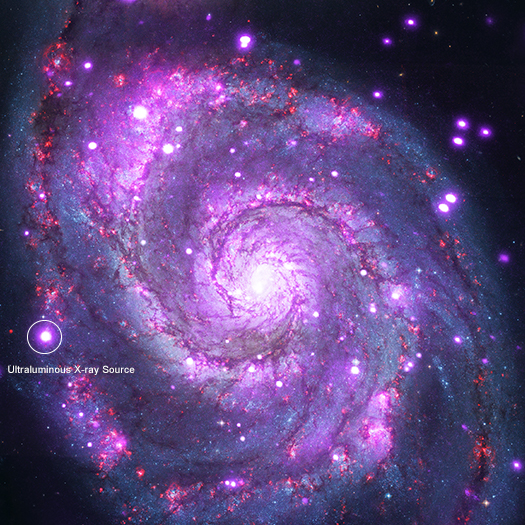
If our eyes could see super-energetic types of light like X-rays, looking at our friends would be a weird experience. We'd be able to see straight through their skin to their bones underneath!
Really, we're lucky we don't have that super power — but there are lots of benefits to looking at X-rays coming from objects in space using telescopes.
Most X-rays come from extremely hot objects with temperatures up to hundreds of millions of degrees, including the Sun, exploded stars and feeding black holes!
In the 1980s, scientists started discovering a new type of object in other galaxies that was extremely bright in X-rays. When looked at with X-ray telescopes, they shone as bright as a million suns combined.
At first, scientists thought these cosmic objects were feeding black holes, but recent studies revealed that some are actually neutron stars.
Neutron stars are the burnt-out cores of massive stars that have exploded. They are extremely dense objects, containing more material than our Sun but squashed into a sphere the size of a city!
Like black holes, neutron stars have ultra-strong gravity that can pull material away from nearby stars. As this material falls toward the neutron star, it heats up and begins to glow with X-rays.
As more and more material falls onto the neutron star, there comes a point where the X-ray light becomes so intense that it actually pushes the material away. At this point the star shouldn't be able to gather material any faster or grow any brighter. But the newly discovered type of neutron star has found a way to break the limit!
"In the way we can only eat so much food at a time, there are limits to how fast neutron stars can gather material," said Murray Brightman, a scientist on the new study. "But these objects are somehow breaking this limit to shine so incredibly bright in X-rays, and we don't know why."
Cool Fact: Neutron stars are actually more similar to planets than stars — they can actually have a solid crust. Some scientists think that neutron star crust is around 10 billion times as strong as steel.
Do you want to learn more about this topic?
Visit the Chandra field guide or send us your questions in an email: cxcpub@cfa.harvard.edu
In cooperation with Space Scoop: Bringing news from across the Universe to children all around the world. Universe Awareness and the Chandra X-ray Observatory
| Children & Online Privacy |



